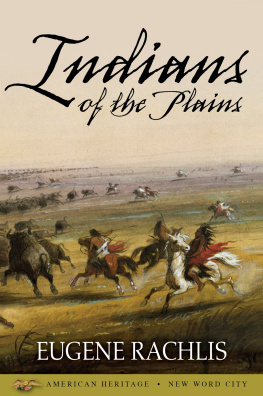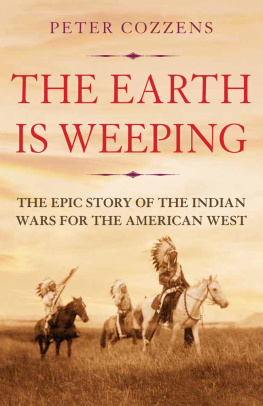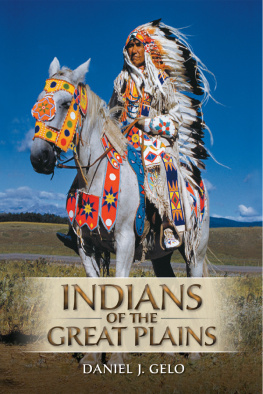
This edition is published by PICKLE PARTNERS PUBLISHINGwww.picklepartnerspublishing.com
To join our mailing list for new titles or for issues with our books picklepublishing@gmail.com
Or on Facebook
Text originally published in 2008 under the same title.
Pickle Partners Publishing 2015, all rights reserved. No part of this publication may be reproduced, stored in a retrieval system or transmitted by any means, electrical, mechanical or otherwise without the written permission of the copyright holder.
Publishers Note
Although in most cases we have retained the Authors original spelling and grammar to authentically reproduce the work of the Author and the original intent of such material, some additional notes and clarifications have been added for the modern readers benefit.
We have also made every effort to include all maps and illustrations of the original edition the limitations of formatting do not allow of including larger maps, we will upload as many of these maps as possible.
THERE SHALL WE BE ALSO: TRIBAL FRACTURES AND AUXILIARIES IN THE INDIAN WARS OF THE NORTHERN GREAT PLAINS
BY
MAJOR JASON E. WARNER, US ARMY
TABLE OF CONTENTS
Contents
TABLE OF CONTENTS
REQUEST FROM THE PUBLISHER
ABSTRACT
From its beginning in the American Revolution to its current conflicts in Afghanistan and Iraq, the United States (US) Army has had to deal with tribal societies. In order to succeed in tribal societies it is essential that the US Army understand tribal structures and the fractures in tribal societies that present opportunities and possible solutions.
Tribal structures create an environment in which conflict over resources and status creates traditional enemies between the tribes. It further weakens internal tribal loyalty as loyalty resides at the lowest level within the tribe that can provide resources, increase the groups status and security. These characteristics create fractures within tribal societies that create an atmosphere in which it is possible to use tribal auxiliaries to resolve conflicts or issues within complex tribal environments.
The Indian Wars on the northern Great Plains from 1865 to 1890 provide some of the best examples in which tribal fractures created the opportunity to use tribal auxiliaries. By closely examining specific events during the Indian Wars, it is possible to identify the characteristics of tribal structures and societies that create the opportunity for using tribal auxiliaries as well as the fact that they provide a unique method for resolving conflict and issues within tribal societies. This study specifically focuses on events that occurred on the northern Great Plains as the US Army sought to subdue and bring into compliance the Sioux and Cheyenne tribes. By examining tribes that assisted the US Army, it is possible to identify tribal fractures and motivations behind why tribes such as the Crow and Pawnee faithfully served as allies to the US Army. It is also possible to identify what led to the collapse of the Sioux and Cheyenne alliance, which resulted in Sioux and Cheyenne bands turning on one another by supporting the US Army against others that refused to comply.
Tribal feuding and competition resulting from tribal structures prevented the Indians from forming effective coalitions against the US Army in the Indian Wars and even resulted in some tribes assisting the US Army. The US Army by forming alliances with tribes or using them as auxiliaries against their traditional tribal enemies was able to overcome some of the disadvantages such as unfamiliarity with terrain, lack of cultural knowledge, and filled gaps in the US Armys fighting capabilities.
The US Army as it conducts operations in tribal environment needs to look beyond traditional or conventional means to resolving conflict. A successful technique is to use tribal auxiliaries in order to take advantage of tribal structures and fractures in order to achieve desired results and objectives.
INTRODUCTION
Intertribal warfare presents a sixth hindrance in the way of civilization. In view of the hostilities among the different tribes of Indians, and the frequent attacks by some of the tribes, requiring a constant state of defense on the part of others, an order has been issued that no Indians be allowed to leave their reservation without permit from the agent, and the Secretary of War has been requested to direct the commanders of military posts to prevent Indians from passing from one agency to another without such permit; and if they find Indians marauding, or engaged in any hostile expedition against any other tribe, to strike them without parley. A satisfactory execution of this arrangement will probably require either an increased enlistment of scouts from friendly Indians, or an increased military force in different portions of the Indian country.Report of the Commissioner of Indian Affairs, Department of the Interior, Office of Indian Affairs, November 1, 1873 {1}
Competition and warfare dominate tribal societies around the world. At the root of this competition and warfare is the tribal structure and fractures that exist in tribal societies. These characteristics of tribal societies are evident throughout history and specifically among the various tribes found in North America in the last half of the 19 th century. However, they were not just a historical facet found in North America, but a worldwide issue as competition and warfare continue to dominate in contemporary tribal societies. One has to look no further than the conflicts in Iraq and Afghanistan to see that tribes play a significant role in current operations. Tribal rivalries and competition play a critical role as each tribe decides to support either the insurgency or the United States (US). A common technique developed in both Iraq and Afghanistan is the use of tribal auxiliaries or militias to assist in providing security and stability. {2} Tribal structures play a significant role in how these societies function. Therefore, understanding tribalism is critical in order to bring stability and compliance from hostile tribes. By properly identifying the traits and characteristics of tribal societies, it is possible to identify their weaknesses, strengths, and uncover opportunities for using tribal auxiliaries or proxies in support of operations in tribal societies.
Since the American Revolution, the US Army has fought with and alongside tribal auxiliaries in many conflicts. The US Armys use of tribal auxiliaries during the Indian Wars on the Northern Great Plains from 1865-1890 effectively demonstrated the feasibility of using tribal auxiliaries. Historical examples of weaknesses and fractures within tribal societies provided opportunities to leaders to use tribal auxiliaries. The characteristics of tribal competition and warfare created an environment in which tribes and bands allied or supported a force against their rivals and competitors. Therefore, a course of action for outside forces operating in tribal societies or involved in fighting tribes is to use traditional tribal enemies and competitors as auxiliaries. Indian scouts and auxiliaries filled gaps and shortcomings within the US Army that improved its ability to bring non-compliant tribes into compliance. Tribes or bands joined with the US Army to fight their competitors, who they were already in a state of war or to improve their own bargaining position with the US Government. The weaknesses and fractures within tribal society created an environment promoting tribes or bands to unite with an outsider against their rivals.








